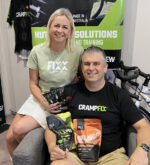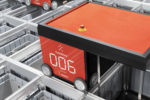Sevaan Group trials 4-day week
Leading parts contract manufacturer, Sevaan Group, announced today it is trialling a 4-day week to evaluate improvement in staff well-being, attracting new talent, and increasing productivity. The trial period will run for three months, from 11th September until the 31st December. The Group is spreading the normal 38-hour, 5-day work week over four days. Each day encompasses two shifts, morning and afternoon, consisting of 9.5 hours each. According to Sevaan Group’s CEO, David Green, the management-led initiative gained traction as a result of the positive outcomes attained by overseas companies that have already trialled the 4-day week. “The evidence suggests that these firms are benefitting from improved productivity, reduced sick leave and unapproved absenteeism, and a general increase in their employees’ well-being.” “The improved well-being of staff is particularly of interest because it aligns so strongly with Sevaan’s culture. We are a very employee focused organisation and our staff’s well-being is paramount. We have already introduced an EAP – LifeWorks – which provides staff with confidential, expert counselling across a broad range of issues, should they request it. We are hoping that a 4-day working week will further support our staff’s wellness. The evidence suggest that it helps to reduce anxiety, stress, fatigue and burnout,” explained David. A 4-day week is also appealing when it comes to attracting and retaining talent. “The manufacturing market in Australia is already very tight when it comes to hiring new staff. The 4-day week provides employees with a shorter working week, and more free time to spend as they please. This greater work-life balance is no doubt attractive to prospective staff, and helps to further differentiate Sevaan and reinforce the Group as an employer of choice,” said David. Evidence from US and UK companies which have already trialled the shorter week indicates that there […]










